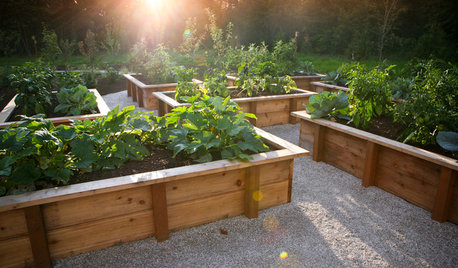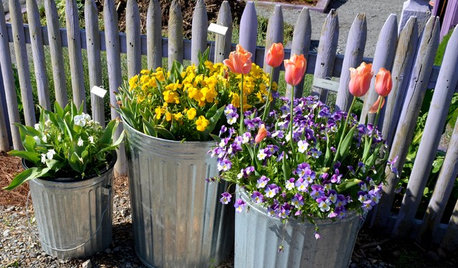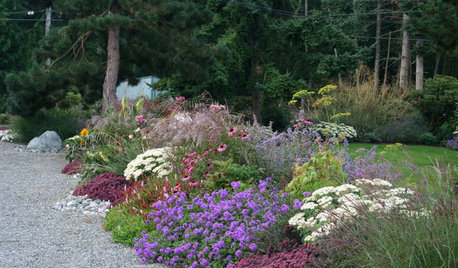New Garden Beds
hazelinok
9 years ago
Related Stories

GARDENING AND LANDSCAPINGBuild a Raised Bed to Elevate Your Garden
A bounty of homegrown vegetables is easier than you think with a DIY raised garden bed to house just the right mix of soils
Full Story
GARDENING GUIDES8 Materials for Raised Garden Beds
Get the dirt on classic and new options for raised vegetable and plant beds, to get the most from your year-round garden
Full Story
SPRING GARDENINGInspiring Raised Beds for Fall and Spring Planting
Make Your Next Vegetable Garden Even Better with Beautiful Boxes and Paths
Full Story
EARTH DAY5 Ideas for a More Earth-Friendly Garden
Consider increasing the size of garden beds, filtering rainwater and using plants to reduce energy use
Full Story
GARDENING GUIDESGreat Design Plant: Milkweed
Quit cringing. This not-weed plant is a sight to behold in the garden, has a delicious vanilla scent and is a magnet for butterflies
Full Story
GARDENING AND LANDSCAPINGRaised Beds Lift Any Garden
From good old-fashioned wood garden boxes to modern metal troughs, raised beds can make any landscape space look great
Full Story
EDIBLE GARDENSSee How a Practical Garden Can Be a Visual Treat, Too
A university edible garden overflows with ideas for growing produce and flowers in containers, beds — or a pickup truck
Full Story
MOST POPULARHow to Design a Colorful Flower Bed
Fall planting: Delight the eye through 3 seasons with bright flowers placed just right. Late summer is the time to plan
Full Story
WINTER GARDENING10 Native Wildflowers to Beautify Your Winter Garden
They stand strong in wind, feed wildlife and are easy to grow. But you may want to add these plants for their looks alone
Full Story
GARDENING GUIDESGreat Design Plant: Knock Out Roses
As glorious as their high-maintenance kin for a fraction of the work, Knock Out roses make even beginners look like garden stars
Full StoryMore Discussions






Auther
Okiedawn OK Zone 7
Related Professionals
Windham Landscape Architects & Landscape Designers · Grand Haven Landscape Architects & Landscape Designers · Lake Oswego Landscape Architects & Landscape Designers · Caldwell Landscape Contractors · Cicero Landscape Contractors · Doctor Phillips Landscape Contractors · Hilton Head Island Landscape Contractors · North Richland Hills Landscape Contractors · Old Saybrook Landscape Contractors · Parkland Landscape Contractors · Wallingford Landscape Contractors · Maple Heights Landscape Contractors · Haddonfield Decks, Patios & Outdoor Enclosures · Houston Decks, Patios & Outdoor Enclosures · Reisterstown Decks, Patios & Outdoor EnclosuresAmyinOwasso/zone 6b
hazelinokOriginal Author
OklaMoni
hazelinokOriginal Author
OklaMoni
hazelinokOriginal Author
OklaMoni
Okiedawn OK Zone 7
Lisa_H OK
slowpoke_gardener
hazelinokOriginal Author
soonergrandmom
Okiedawn OK Zone 7
OklaMoni
Okiedawn OK Zone 7